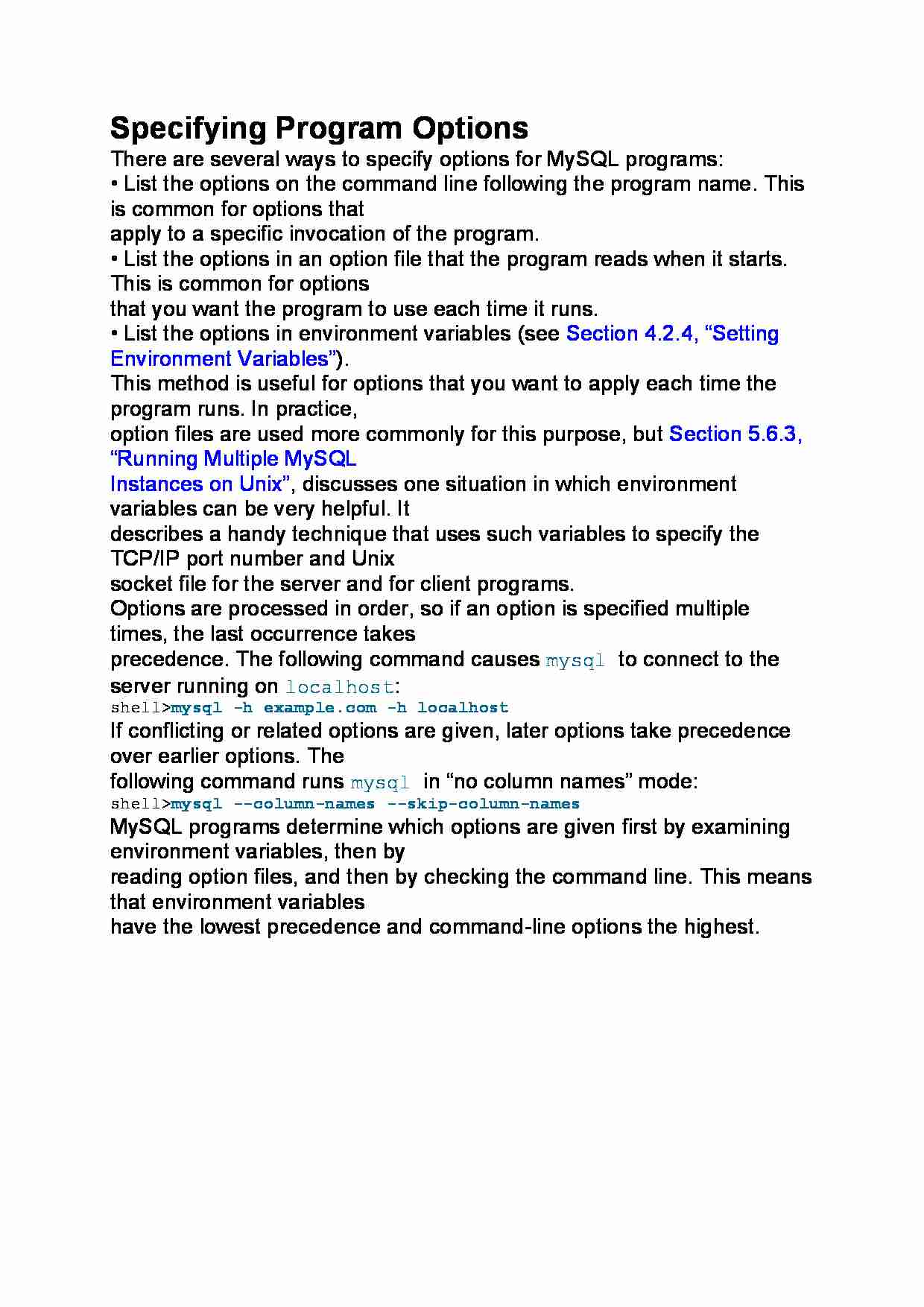
Specifying Program Options
There are several ways to specify options for MySQL programs:
• List the options on the command line following the program name. This is common for options that
apply to a specific invocation of the program.
• List the options in an option file that the program reads when it starts. This is common for options
that you want the program to use each time it runs.
• List the options in environment variables (see Section 4.2.4, “Setting Environment Variables”).
This method is useful for options that you want to apply each time the program runs. In practice,
option files are used more commonly for this purpose, but Section 5.6.3, “Running Multiple MySQL
Instances on Unix”, discusses one situation in which environment variables can be very helpful. It
describes a handy technique that uses such variables to specify the TCP/IP port number and Unix
socket file for the server and for client programs.
Options are processed in order, so if an option is specified multiple times, the last occurrence takes
precedence. The following command causes mysql to connect to the server running on localhost:
shell mysql -h example.com -h localhost
If conflicting or related options are given, later options take precedence over earlier options. The
following command runs mysql in “no column names” mode:
shell mysql --column-names --skip-column-names
MySQL programs determine which options are given first by examining environment variables, then by
reading option files, and then by checking the command line. This means that environment variables
have the lowest precedence and command-line options the highest.
... zobacz całą notatkę



Komentarze użytkowników (0)